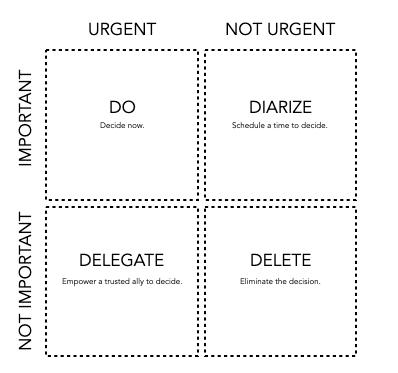Have you ever been in line at the supermarket and spied a candy bar display near the register? That’s because grocers know that the longer you shop in their stores, the less willpower you have, and the more likely you’ll be to throw that candy bar in your cart. After an exhaustive study, the United Kingdom recently banned unhealthy food and candy displays at checkouts for this reason.
Why is your willpower more likely to fail after you’ve spent an hour shopping? And why were you more likely to avoid the temptation of candy, donuts, ice cream, and other temptations you came across earlier in your shopping?
It’s down to a psychological phenomenon known as decision fatigue.
What is decision fatigue?
The average person makes about 35, 000 decisions a day. And every conscious decision consumes a lot of mental energy. Decision fatigue describes how a series of choices can exhaust people’s brains and make them more susceptible to poor decision making.
This effect can cause customers to make increasingly irrational or poor choices the longer they shop. This effect can make people more susceptible to sales and marketing techniques and impulse purchases.
Decision fatigue can make the smartest and most strong-willed among us weak. Research has found that judges are more likely to deny parole at the end of a long day. Even doctors are more likely to prescribe unnecessary medication later in the day.
How to fight decision fatigue
Decision fatigue can be a real problem, especially if you’re trying to stick to a goal or New Years’ resolution. As the day wears on, you become less and less likely to make the right decisions — like choosing fruit instead of candy or working out instead of watching Netflix.
So how can we fight decision fatigue? There are a few approaches that can be successful:
Narrow down your options
Prioritize your decision-making
Rely on routines wherever possible
1. Narrow down your options
Routine, day-to-day decisions can eat away at our limited mental resources. Questions like “What should we watch on Netflix tonight?” can sometimes spur hours of debate. But you can reduce cognitive strain by narrowing down your choices to a smaller subset.
For example, capsule wardrobes have helped thousands of people narrow down their outfit options in the morning. Instead of a random assortment of hundreds of colors and styles, a capsule wardrobe has a small number of classic items augmented with seasonal pieces.

#image_title
The collection is usually limited to a simple color palette (black, white, and grey is a common theme), and pieces can be mixed and matched. By whittling down thousands of possible outfits into a fail-proof few, capsule wardrobes can help eliminate many low-value, routine choices.
2. Prioritize your decision-making
Not all decisions are equally important. By eliminating or delegating non-critical choices, you can save brainpower for the most challenging decisions. For example, Apple founder Steve Jobs famously fought decision fatigue by wearing the same clothes every day. He was able to eliminate a low-value decision and save his mental resources for critical issues.
But how do you know what’s a low or high-value decision? The Eisenhower Matrix, a tool developed by President Dwight D. Eisenhower and refined by author Stephen Covey, can help you figure that out.

Source: Created by the author
In this model, decisions are divided into four subcategories, depending on how urgent and important they are:
- Urgent and Important = Do these decisions now. They can’t wait.
- Urgent but not Important = Diarize the decision. In other words, put it in your calendar to tackle later.
- Not Urgent but Important = Delegate these tasks to someone you trust.
- Not Urgent and Not Important = Delete these decisions. They don’t matter.
Why do we need a tool like the Eisenhower matrix? Well, for one it’s hard to identify which decisions are important versus which are just urgent. A recent study identified a behavioral science principle known as the Mere Urgency Effect.
This effect states that when people decide what to work on, they often confuse urgency with importance. The research team showed that people prioritize urgent tasks over important tasks, even when the less urgent task offers a greater reward.
Mere Urgency Effect: People always prioritize urgent tasks over important tasks, even when the less urgent task offers a greater reward.
3. Refresh your mind
No one can eliminate all of their 35, 000 daily decisions. We can reduce their impact, but experiencing some level of decision fatigue is inevitable. We need a plan for when our brains are worn out.
Activities like meditation can help refresh your brain for another round of decision-making. In a recent interview, comedian Jerry Seinfeld cited transcendental meditation as a go-to tool to combat mental fatigue. Seinfeld put it this way:
“As a standup comic, I can tell you, my entire life is concentration fatigue. Whether it’s writing or performing, my brain and my body, which is the same thing, are constantly hitting the wall.
And if you have [transcendental meditation] in your hip pocket, you’re Columbus with a compass.”
Not only can meditation help you hit a mental reset button, but there are other brain benefits as well. Research has found that using a meditation app for up to 15 days reduced stress by 14%, irritability by 27%, reduced aggression by 57%, and increased compassion by 23%. Study participants even become more compassionate with themselves.
🚀 Learn what makes buyers tick
Join 8k+ of world's best marketers from brands like Disney, Coca-Cola, Google who are learning marketing psychology in <5 mins a week.
Decision Fatigue: The Bottom Line
If you’re pursuing habit change, trying to achieve a goal, or make higher quality decisions, planning your day around decision fatigue can help increase your chances of success.
As the saying goes, “Know thy enemy.” And that is especially true when the enemy is ourselves.
